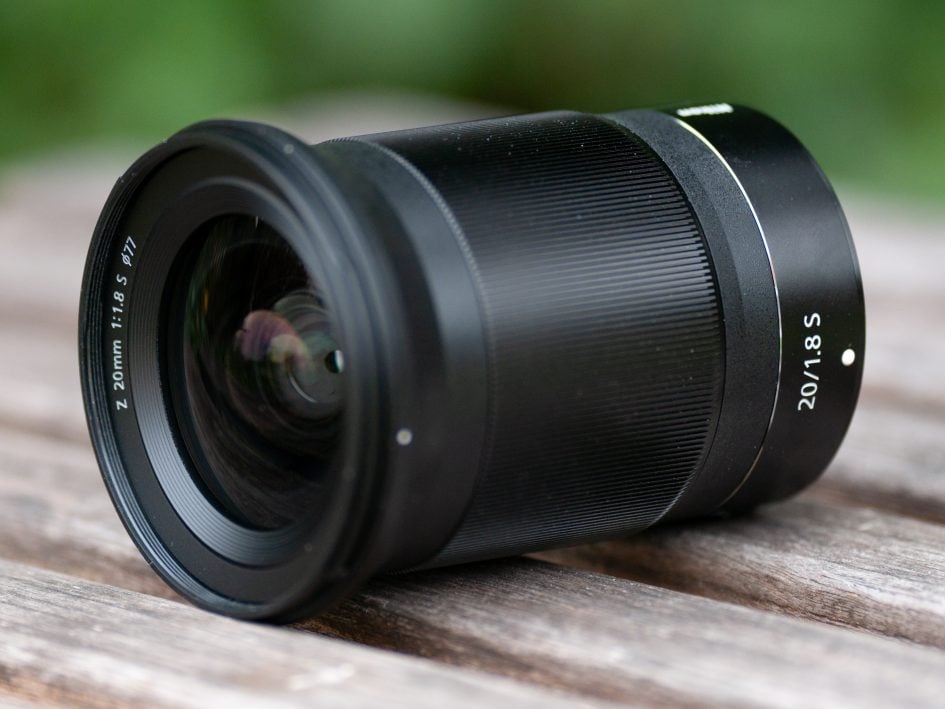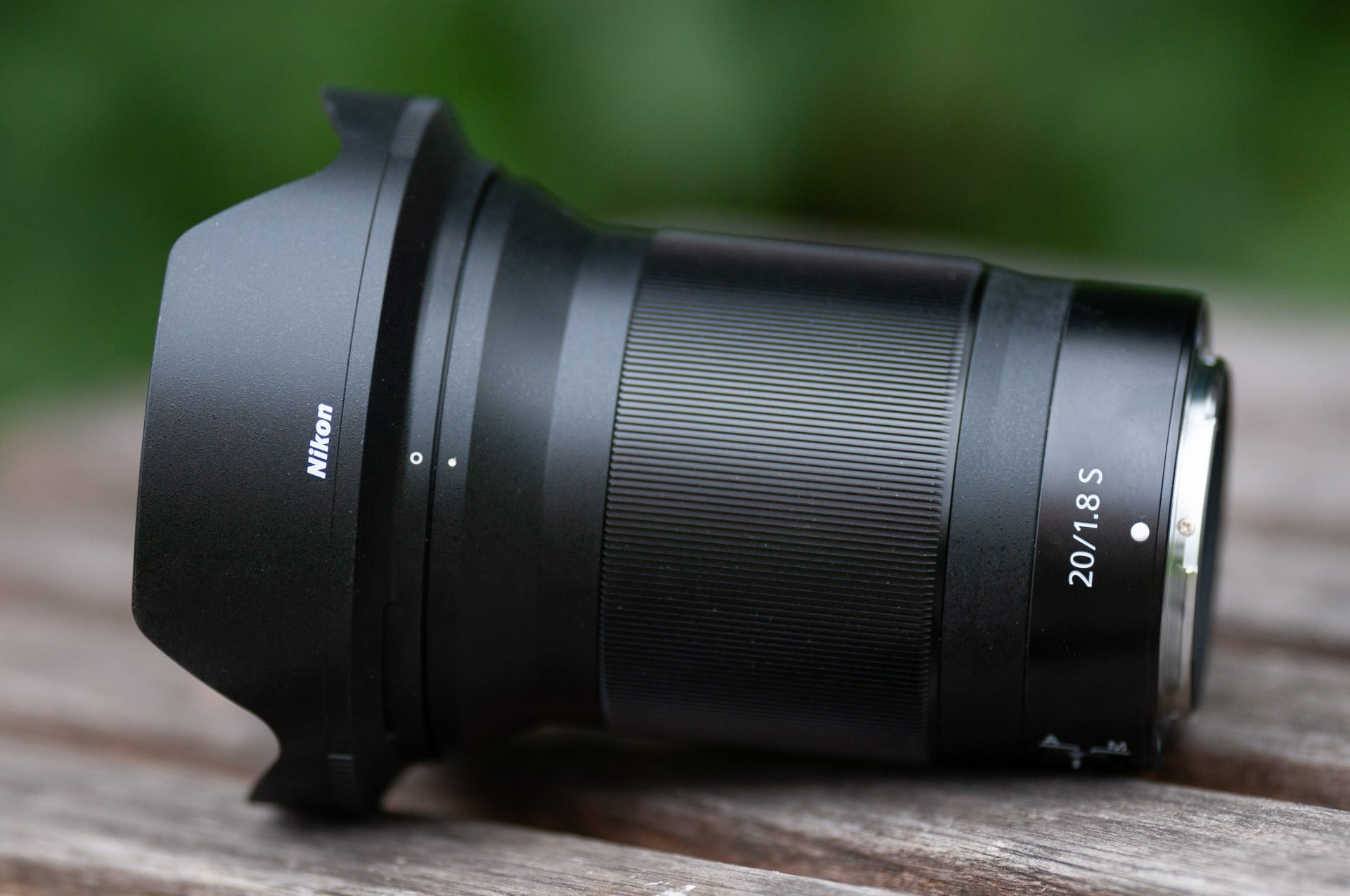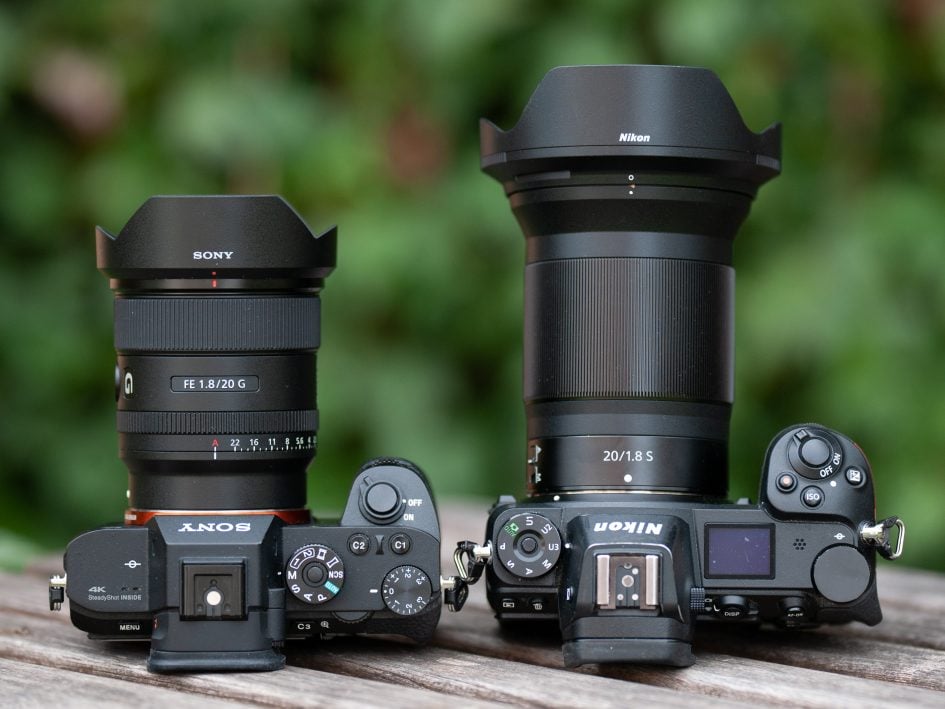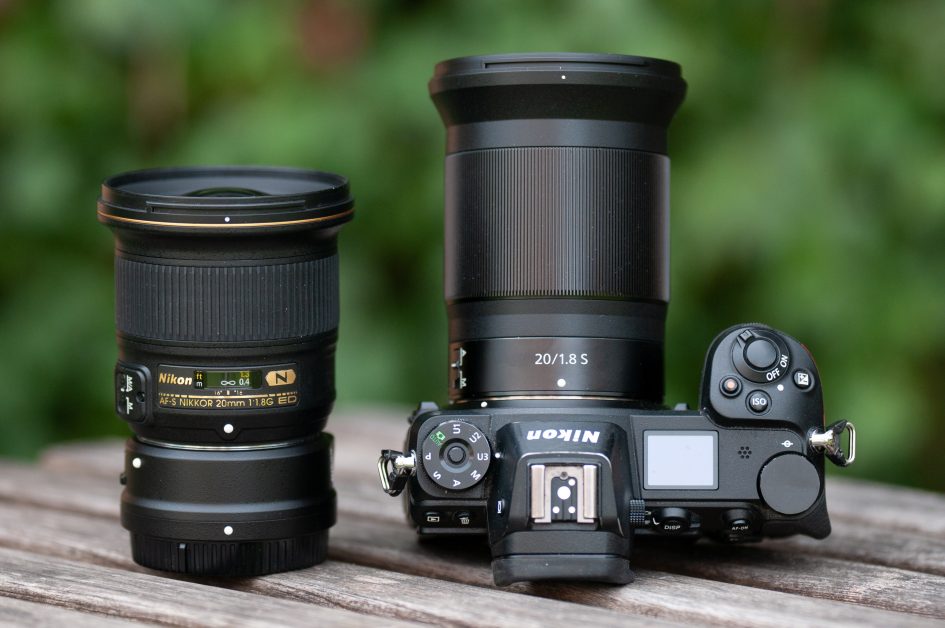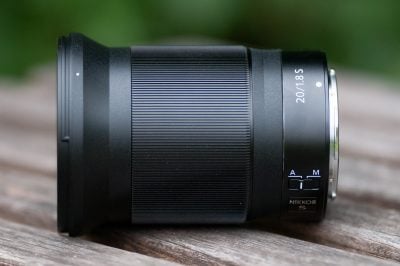Nikon Z 20mm f1.8 S review
-
-
Written by Thomas
Intro
The Nikon Z 20mm f1.8 S is an ultra wide-angle prime lens for Nikon’s Z-series mirrorless cameras of DX or FX format: on a cropped body like the Z50 the lens is equivalent in angle-of-view and depth-of-field to a 30mm f2.8 lens. On a full-frame body the Z 20mm f1.8 S is the widest Z-mount prime lens with autofocus you can get at the time of writing, giving a 10 degrees broader angle-of-view than Nikon’s Z 24mm f1.8 S. The wider coverage lets you capture more of architecture or landscapes while the bright aperture lets you shoot longer under diminishing light and better isolates closer subjects from the background compared to f2.8 or f4.0 zooms. But thanks to Nikon’s FTZ adapter, existing F-mount lenses can alternatively be easily used on the new Z bodies. So the new Z 20mm f1.8 S faces competition from a host of other wide angle lenses with the F-mount, most notably Nikon’s own AF-S 20mm f1.8G.
As the Z 20mm f1.8 S is a member of Nikon’s high-end “S” line it is expected to perform on a very high level. To find out whether the new Nikon Z 20mm f1.8 S rightfully carries the “S” moniker I tested its optical qualities on the 45MP Z7 body against its F-mount sibling, which got a recommendation in my the Nikon AF-S 20mm f1.8G ED review and also compared it to the Sigma 20mm f1.4 Art and Nikon’s Z 14-30mm f4.0 zoom. So if you’re interested in how Nikon’s widest prime lens (so far) for their new Z system performs, you’ve come to the right place! PS – if you’re interested in the other Z lenses in Nikon’s line-up check out our in-depth reviews: Nikon Z 14-30mm f4.0 S review / Nikon Z 24-70mm f2.8 S review / Nikon Z 24-70mm f4 S review / Nikon Z 24mm f1.8 S review / Nikon Z 35mm f1.8 S review / Nikon Z 50mm f1.8 S review / Nikon Z 58mm f0.95 S Noct review / Nikon Z 85mm f1.8 S review.
Facts from the catalog
As usual I’ll have a look at the technical data of the new Nikon Z 20mm f1.8 S first. I’ve rated the features with a [+] (or [++]), when it’s better than average or even state of the art, a [0] if it’s standard or just average, and [-] if there’s a disadvantage. For this comparison I use the Nikon AF-S 20mm f1.8G (“F Nikkor” for short) and the Sigma 20mm f1.4 Art (“Sigma”). Please keep in mind that the Sigma has a 2/3 of a stop brighter focal ratio which influences size and weight of that lens.
Size (diameter x length): 84 x 109mm (3.3 x 4.3in.) plus 34mm for the lens hood which is 107mm in diameter. Which makes it the largest f1.8 Z Nikkor so far, even larger than the Z 85mm f1.8 S. The F Nikkor is smaller at 82 x 80mm + 35mm lens hood. Due to its origin as a DSLR design from 2015 the Sigma is the behemoth in this comparison at 91 x 130mm including the non-detachable lens hood. For an apples-to-apples comparison one has to allow for the differences of flange distance between the Z-mount (16mm) and the F-mount (46.5mm). If you add these 30.5mm (1.2in.) to the F-Nikkor it has practically the same length as the Z-Nikkor when using it via the FTZ adapter on a Nikon Z camera – see image below. And the Sigma grows to a total length of 161mm. [0]
Weight: 503g (17.7 oz.) plus 27g for the lens hood. The F Nikkor is 353g (12.5 oz.) + 23g lens hood, the Sigma 944g (33.3 oz.). Adding another 133g (4.7 oz.) for the FTZ adapter to use it on a Nikon Z camera the F Nikkor is still slightly lighter than the new Z Nikkor and the Sigma is almost 1.1 kg (38 oz.). But when you compare the weight of a Nikon Z 20mm f1.8 S plus Nikon Z7 camera against the Nikon AF-S 20mm f1.8G plus Nikon D850 you still save 200g with the mirrorless equipment. [0]
Optics: 14 elements (including 3 special dispersion and 3 aspherical elements) in 11 groups which is similar to the F Nikkor and Sigma. The new Nikon Z 20mm f1.8 S uses Nikon’s Nano-Coating to reduce flare, glare and ghosting. [+]
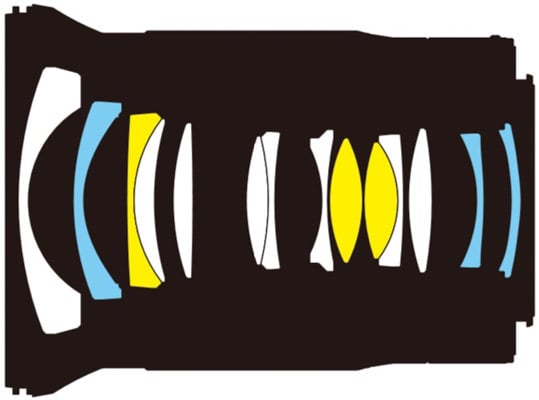
Closest focus distance is 0.19m (0.6ft.) in manual focusing with a magnification of 1:4.6 and a working distance of only 7cm (3in.). A magnification of 1:10 is achieved at 0.29m giving a working distance of 13cm with lens hood attached. The F Nikkor achieves a slightly better magnification of 1:4 in manual focus, the Sigma 1:6.5. [0]
Filter-thread: 77mm same as the F Nikkor. The Sigma has no filter-thread. [+]
Image stabilization: The lens offers no optical stabilization. But the Nikon Z6 and Z7 provide built-in sensor-shift stabilization over 5 axis – plus an optional electronic stabilization in video mode. The F Nikkor and the Sigma have no optical image stabilization built in but the body-based image stabilization of a Nikon Z6 and Z7 body provides roll, pitch, and yaw correction. [0]
Auto focus: Yes, with built-in AF drive. Manual-focus override is by simply turning the focus ring – if you didn’t assign another operation to this multi-function ring. The focus ring has a variable gearing that allows for very precise manual focus when turned slowly. Unfortunately this feature cannot be switched to linear gearing which makes smooth focus pulling for videographers almost impossible. Focus on the F Nikkor and the Sigma have the traditional directly coupled DSLR-style AF-drive with linear gearing and a focus ring does only that: focusing. Which comes with the benefit of a distance- and dof-scale. [+]
Covers full frame/FX or smaller. Same with the alternatives. [+]
Price: The lens is pretty expensive at a list price of 1200 EUR (incl. 19% VAT) / 1050 USD. The F Nikkor goes for 730 EUR / 720 USD, the Sigma can be had for 840 EUR / 900 USD. [-]
Comes with a soft pouch and the lens hood is included, reversible for transport. That’s similar to the F Nikkor but the new pouches for the Z lenses are disappointing: the material is flimsy and the pouch has no strings to pull it close. So if you put the lens in your bag it might easily slip out of its pouch and bang around unprotected. The Sigma has a nice well-padded case. [0]
Aperture ring: the multi-function control ring of an S-lens can be assigned to operate the aperture, exposure compensation or focus. It automatically falls back to its customary focus control when the lens is switched to manual focus. Although the lens control ring has not the same benefit as having a focus ring plus a dedicated aperture ring on the lens it gives you more flexibility to control one of the more important shooting parameters directly from a nice ring on the lens. The F Nikkor and the Sigma don’t have an aperture control ring. [+]
Sealing: yes, a rubber grommet at the lens-mount plus further special weather-sealing throughout the construction. The F Nikkor has a sealing at the lens-mount, the Sigma not even that. [+]
The score in the “features-department” is 1[-]/5[0]/6[+]. So the lens has a mixed feature set: It’s neither very small nor very light but it offers the nifty feature of the multi-purpose control ring and is sealed against the weather like Nikon’s pro lenses. It costs a pretty penny but the price may well be justified if the lens performs as expected.
My biggest gripe is the length of this lens which had the benefit of being designed for a mirrorless system with a very short flange distance of only 16mm. Still it is as long as the older DSLR design (with adapter). Sony shows that you can built an optically very good 20mm f1.8 which is much more compact: Their mirrorless system with the Sony 20mm lens is 34mm shorter than the Nikon mirrorless combo. Have a look at the following comparison:
Two 20mm f1.8 lensess for mirrorless cameras
Above: Sony FE 20mm f1.8 G on A7R II (left), Nikon Z 20mm f1.8 S on Z7 (right)
Alternatives
The market for ultra-wide prime lenses is not too crowded and no other manufacturer offers a 20mm lens for Nikon’s Z-mount so far. So for alternatives we have to look at F-mount lenses which can be used via Nikon’s FTZ adapter – adding another 31mm in length and 133g in weight:
- Nikon has the AF-S 20mm f1.8G ED from 2014 for 730 EUR / 720 USD. For more information see my Nikon 20mm f1.8G review where it got a recommendation.
- From Sigma there’s the 20mm f1.4 Art from 2015 costing 840 EUR / 900 USD. It came Highly Recommended in my Sigma 20mm f1.4 Art review. It offers a 2/3 of a stop brighter focal ratio but is a very big and heavy lens with the additional disadvantage that it cannot use standard filters.
- Samyang/Rokinon has a manual focus 20mm f1.8 ED AS UMC for 480 EUR / 450 USD which is a design from 2016.
Two ways to go 20mm on a Nikon Z camera
Above: Nikon AF-S 20mm f1.8G (left, on FTZ-adapter), Nikon Z 20mm f1.8 S (right)
If you’re flexibel regarding the focal length there are two other ultra-wide angle lenses with Z mount so far:
- The Laowa 15mm f2.0 Zero-D has a 16 degrees wider angle of view and is manual focus only. It costs 1000 EUR / 850 USD.
- The 24mm Z Nikkor has a 10 degrees narrower angle of view and came Highly Recommended in my Nikon Z 24mm f1.8 S review.
Finally you might also consider the Nikon Z 14-30mm f4.0 S as an alternative. It has the benefit of a 2.1x zoom range covering a wide range of very useful focal lengths starting at an ultra-wide 14mm offering an immersive 114 degrees viewing angle albeit at a meagre f4.0 focal ratio. It is shorter (at least in its collapsed state) and a bit lighter than the Z 20mm f1.8 S, it is so far the only 14mm full-frame lens which can use standard filters, and it offers very good optical performance which got it a Highly Recommended in my Nikon Z 14-30mm f2.8 S review. At 1150 EUR / 1300 USD it is similarly priced as the Nikon Z 20mm f1.8 S. So the choice is: flexibility in focal length or 2.3 EV more light gathering power.
Focus
Focus accuracy and repeatability is critical to consistently produce sharp shots especially with large aperture lenses. Repeatability (the accuracy of focus on the same subject after repeated focus-acquisition) of this lens is very good (measured 98.2% in Reikan FoCal) with no outliers over a series of 40 shots. There is no focus variation whether the lens focuses from a closer distance or from infinity.
The lens focuses in around 0.3 sec from infinity to 0.29m (1:10 magnification), which is very fast. Hunting didn’t occur under the well-lit test conditions. The focus/control ring is 49mm wide. Its surface is not rubberized but as it moves super smooth and can easily be operated even with your pinky the finely knurled metal surface is well up to its task. But the ring now covers a dominant portion of the lens’s surface – as compared to the 30mm wide focus ring of the Sigma or the 24mm width on the Nikon AF-S 20mm f1.8G. This increases the risk of inadvertently turning the ring and changing focus, exposure compensation or aperture. I’m not overly happy with this.
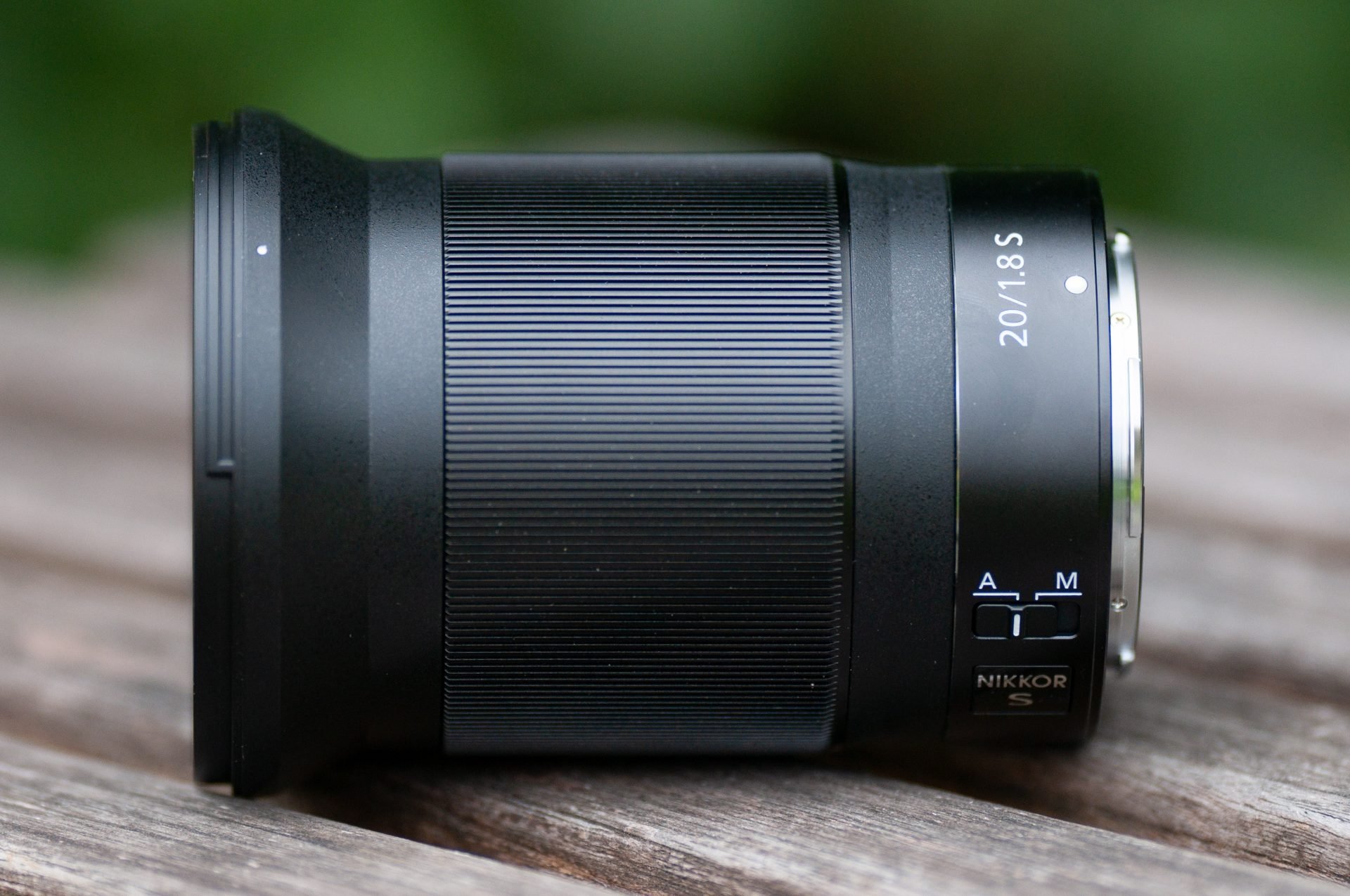
AF-operation of the lens is barely audible from the outside. But if you record video with the built-in microphone the AF-drive still produces a slight buzz. This lens is clearly not as quiet as the Nikon Z 24-70mm f4S. If you use the control ring on the lens to change the aperture this works smoothly and without noise.
The lens is not entirely free of focus breathing: when I adjusted the focus from infinity to 0.29m on the new Z Nikkor, I measured a small 3% decrease in magnification. But this should not displease videographers.
Next check out my quality results!
Check prices on the Nikon Z 20mm f1.8 S at B&H, Adorama or WEX. Alternatively get yourself a copy of my In Camera book or treat me to a coffee! Thanks!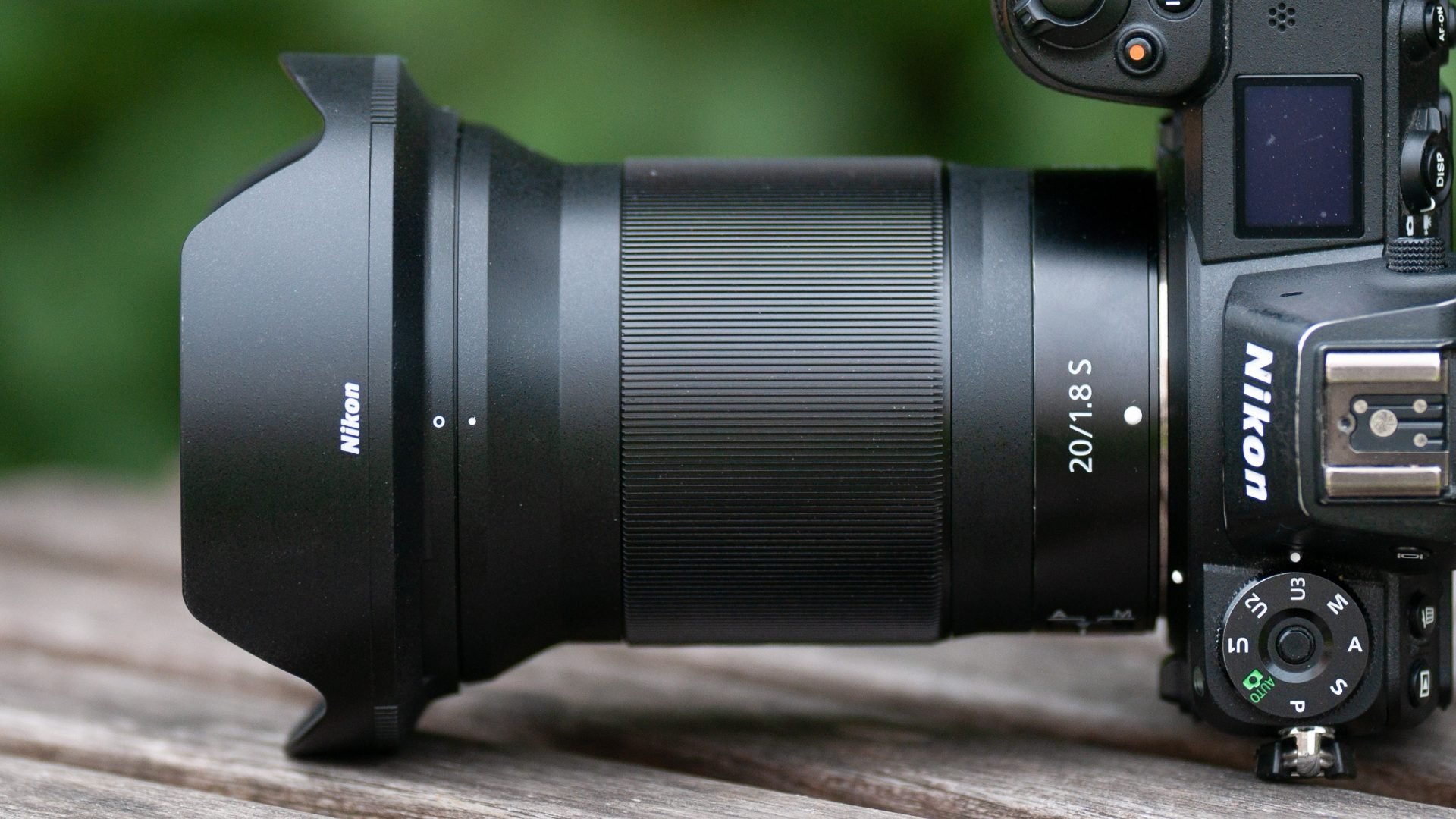
 The Nikon Z 20mm f1.8 S is a unique proposition for owners of Nikon's full-frame mirrorless cameras: It is the widest large aperture lens with autofocus designed specifically for the short flange distance of the Nikon Z system. All alternatives are older DSLR designs which can be used via FTZ adapter but do not produce the same image quality. It may be the largest f1.8 Z Nikkor so far but its size and weight are still acceptable, its performance inside the APS-C image-circle is very good even at very short shooting distances and it focuses very fast and reliably. The lens renders very contrasty images and lets you shoot confidently under adverse contra-light situations which is a boon especially with the very wide angle of view. But it's a bit soft in the FX corners especially at longer distances like landscape shots and longitudinal CAs occasionally rear their ugly head. Sony's FE 20mm f1.8 GM is proof that a modern lens design can be smaller and produce better corner sharpness and less loCA. This makes the Z Nikkor miss out on our top award but the Nikon Z 20mm f1.8 S still deservedly earns a recommendation.
The Nikon Z 20mm f1.8 S is a unique proposition for owners of Nikon's full-frame mirrorless cameras: It is the widest large aperture lens with autofocus designed specifically for the short flange distance of the Nikon Z system. All alternatives are older DSLR designs which can be used via FTZ adapter but do not produce the same image quality. It may be the largest f1.8 Z Nikkor so far but its size and weight are still acceptable, its performance inside the APS-C image-circle is very good even at very short shooting distances and it focuses very fast and reliably. The lens renders very contrasty images and lets you shoot confidently under adverse contra-light situations which is a boon especially with the very wide angle of view. But it's a bit soft in the FX corners especially at longer distances like landscape shots and longitudinal CAs occasionally rear their ugly head. Sony's FE 20mm f1.8 GM is proof that a modern lens design can be smaller and produce better corner sharpness and less loCA. This makes the Z Nikkor miss out on our top award but the Nikon Z 20mm f1.8 S still deservedly earns a recommendation.